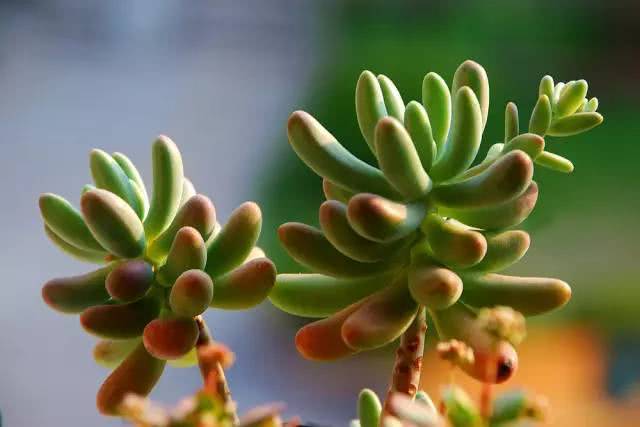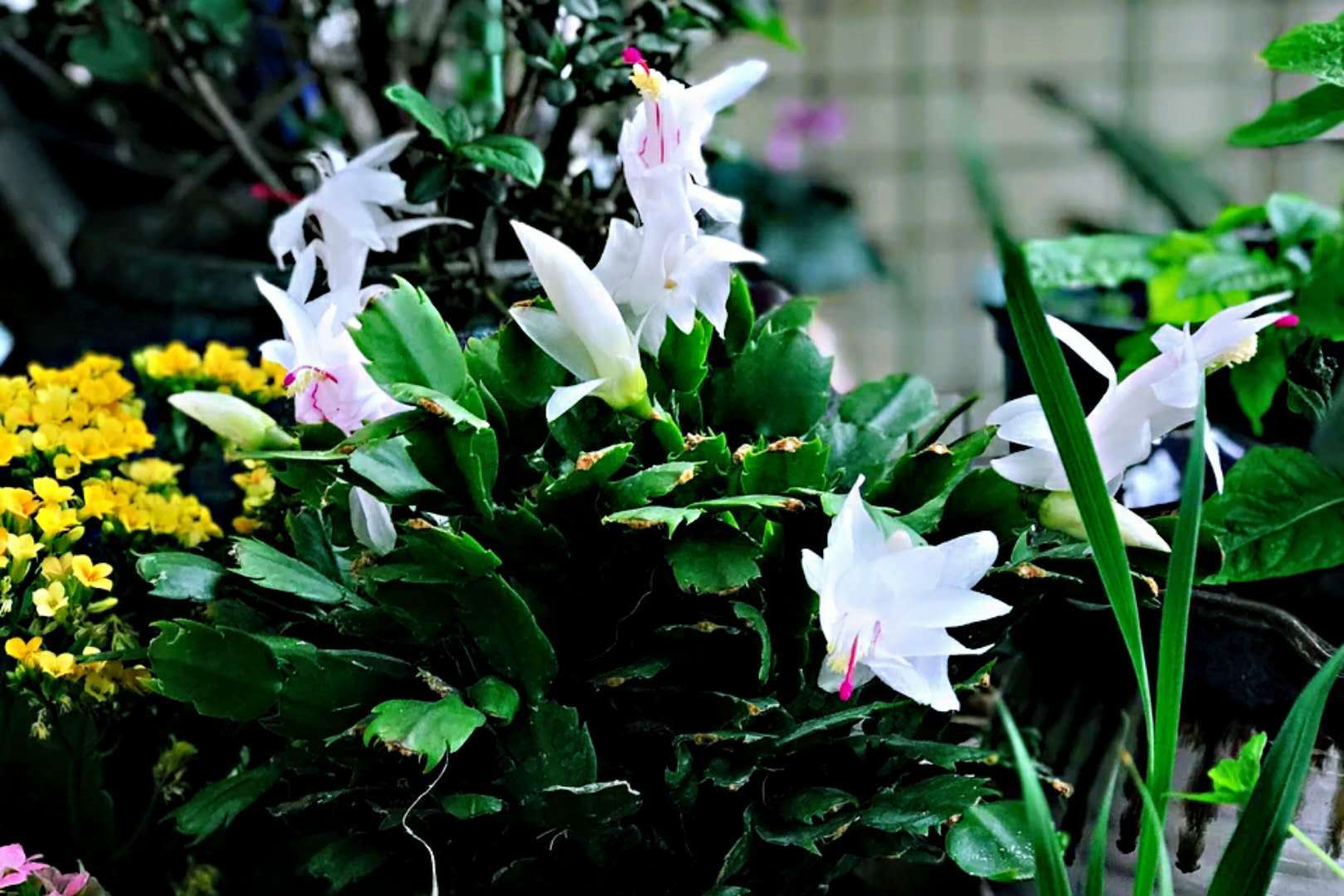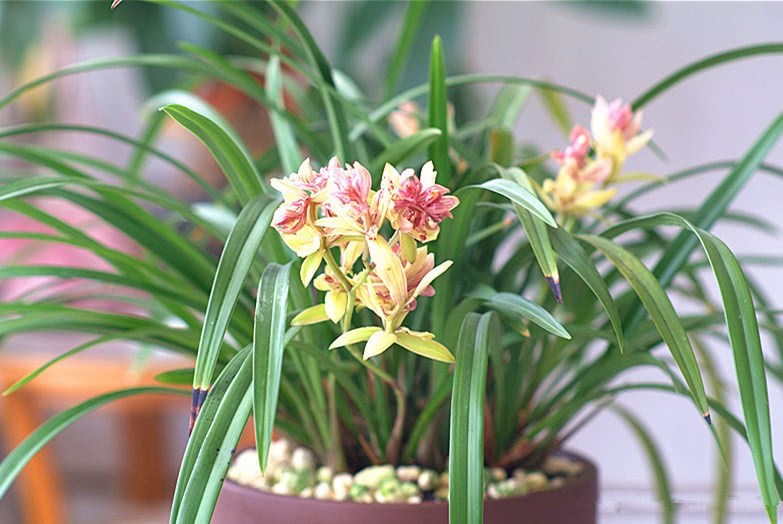Effect of air humidity on succulent plants

Some meat fans often find such a problem: just from the flower market Amoy meat baby, not a few days have been unable to see just "settled" when the spirit of the energy. It's really a matter of humidity.
In dry northern regions, it is especially important that the best place to grow meat is your own balcony or windowsill.
So why are these problems happening?
And why is humidity so important?
The succulent plants in the flower market are all produced in flower beds. Such plants grow up in greenhouses, which are closed for most of the time, so the air humidity inside is relatively high. The plants cultivated in this way are plump and very lively. However, after it is purchased, the above problems will occur because the home cultivation sites in most areas often do not meet such conditions.
Succulent plants do not grow in harsh deserts, so how do they use air humidity?
The succulent plant's home area is warm for a few hours before sunset (especially at noon), but the temperature drops sharply at night, so that moisture in the air condenses into a fog, especially at dawn. This moisture, which exists in gaseous form, can also be absorbed by succulent plants. Conditions in most cultivation sites are inadequate. Not included here are some epiphytic species and some bromeliaceae plants that require higher air humidity.
Because of the limitation of cultivation site, many plants appeared fading, leaf tip withered, withered, plant aging in advance and so on. This is not seen in greenhouse cultivation. It's not lethal, but it's less ornamental.
The most effective method is simple: spray with a squirt can. There are also most fans will use a disposable plastic cup upside down in the basin (more in spring and winter). Or choose to cultivate in a glass jar, spread a layer of coarse sand at the bottom, and sprinkle water on it from time to time. This will increase humidity and will not make the basin often "flooded with water." In short, the adjustment of air humidity should be considered from many aspects, including types, seasons, growth stages, etc., and must not be generalized. High humidity plants are easy to rot and easy to cause scale insects; low humidity plants will reduce ornamental and easy to cause red spiders.
humidity recommendations
1
Air humidity requirements for each season
It is important to maintain a certain air humidity during the growing season. The effect of air humidity is evident as plants enter the growing season. Species native to tropical rainforests are more demanding. Some horticultural varieties with rich color changes are more colorful if they can maintain a considerable amount of air humidity. It can be said that basically most varieties need a certain humidity at this time. During dormancy, however, the humidity of the air should be carefully controlled.
2
Air humidity at seedling stage
Air humidity is particularly important at seedling stage because there is a process of "squatting" at seedling stage. At this time, the purpose of controlling the moisture in the soil is to promote the growth of new roots. If the air humidity can be maintained at a high level, it will not be short of water due to squatting. Generally, the requirements for air humidity at seedling stage are higher than those at other growth stages, but the air humidity at this time is also the most difficult to master.
The smaller the seed, the smaller the seedling, the poorer its resistance, and often unable to tolerate high humidity. Most of the typical varieties of Apricot family, Crassulaceae part of the varieties (the most prominent season Begonia) as a representative. After molding, this phenomenon will be greatly improved, and the problem of air humidity will not be so prominent.
3
Asexual reproduction requires air humidity
There are two kinds of asexual propagation commonly used in families: cuttage and grafting. Cutting should pay attention to plant organs from the mother on the separation of a few days after all to keep dry. This time period depends on the variety, less than 4, 5 days more than 1 month, to be completely dry wound can be inserted in the matrix. At this time, high air humidity can be maintained. It is advocated to create a dry environment, which can take root in a short time, but the consumption is large.
Another idea is to create a moist environment, which is less costly for individuals. In grafting, the first two weeks after grafting should be kept dry and ventilated. Excessive humidity has an impact on the survival rate of grafting.
- Prev

Raise the pot in autumn as long as you keep it open from winter to spring.
Spent the hot summer, as the weather is getting cooler and cooler, the flowers raised in our home have also returned to growth! Autumn this stage, for many flowers is very critical! For example, the following three kinds of flowers, if not good in autumn.
- Next

Novice orchids choose these cheap, easy-to-bloom, diligent, beautiful and fragrant plants.
Guide green potted plants is a necessary embellishment of home life, raising some flowers and plants at home, many benefits, not only can beautify the room, but also happy mood. "Huasheng potted Diary No. 1281" will introduce you to several orchids suitable for novice cultivation. ...
Related
- Wuhan Hospital Iron Tree Blooming Result Was Instantly Frightened by the Gardener Master
- Which variety of camellia is the most fragrant and best? Which one do you like best?
- What is the small blue coat, the breeding methods and matters needing attention of the succulent plant
- Dormancy time and maintenance management of succulent plants during dormancy
- Minas succulent how to raise, Minas succulent plant pictures
- What are the varieties of winter succulent plants
- How to raise succulent plants in twelve rolls? let's take a look at some experience of breeding twelve rolls.
- Attention should be paid to water control for succulent plants during dormant period (winter and summer)
- Watering experience of twelve rolls of succulent plants
- Techniques for fertilizing succulent plants. An article will let you know how to fertilize succulent plants.

